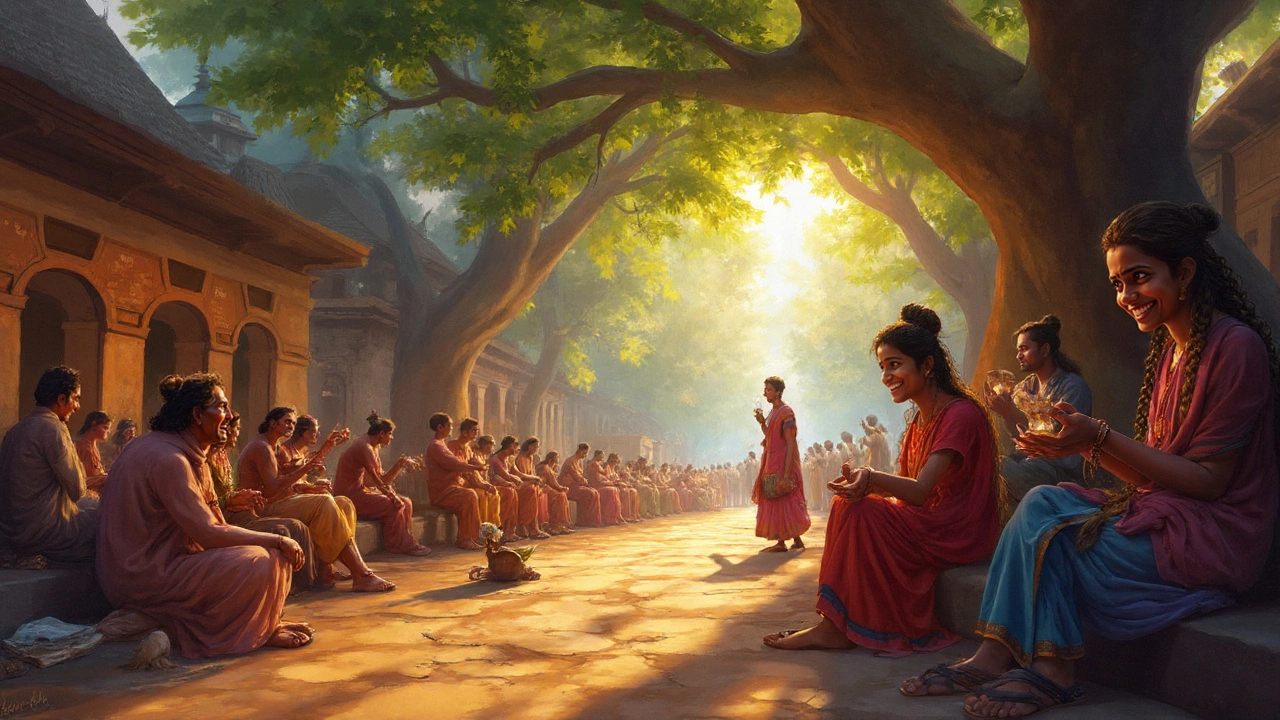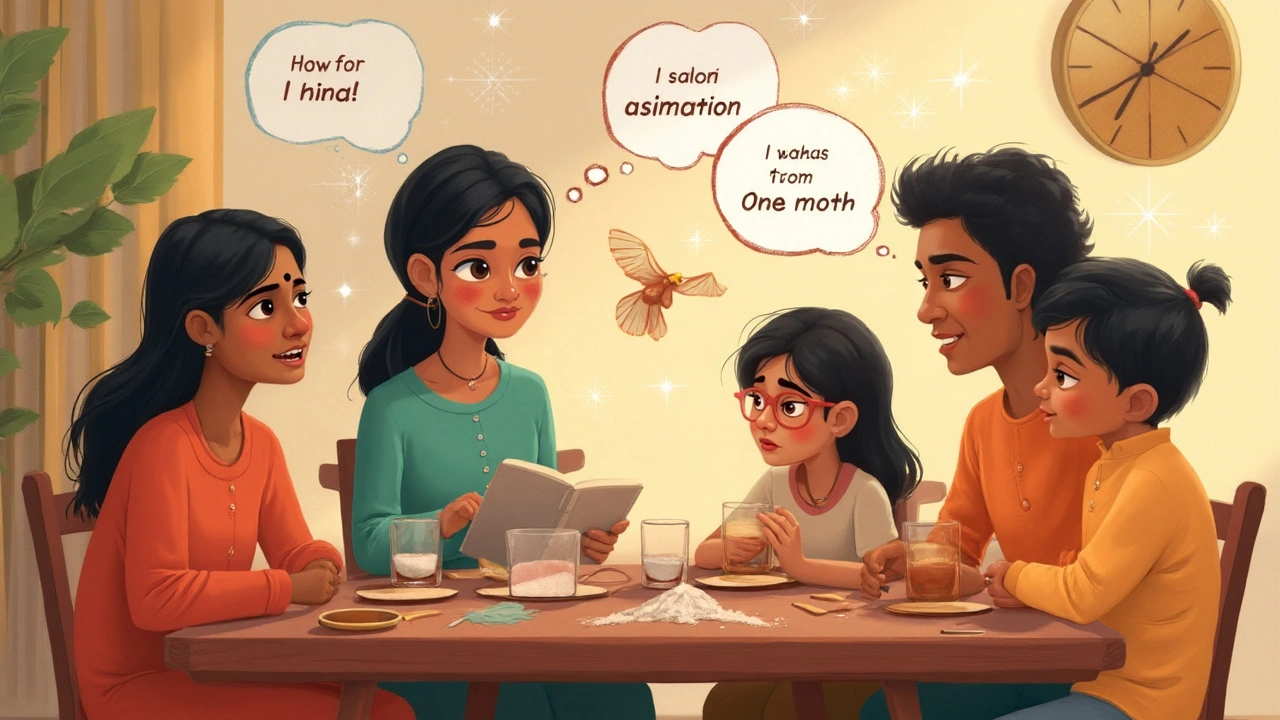
You can find cultural myths lurking everywhere—at the dinner table, at school, and in just about every corner of society. Some stories are so old that people don’t even question them anymore. Others spread so fast on social media, you'd think someone cast a spell on the internet. But here’s the twist: a decent chunk of what we all 'know' isn’t true. My son Zane actually believed for ages that bats are blind because his mate at school swore it. And how many people grew up dreading the number 13? These myths aren’t just quirky stories; they shape worldviews, influence laws, and sometimes even inspire wars. Wild, right? Think of this as your behind-the-scenes pass into what cultural myths really are, where they come from, and—most importantly—what we can actually trust.
What Really Counts as a Cultural Myth?
Before tearing into the juiciest examples, it helps to pin down what counts as a cultural myth. It’s not just about Zeus tossing thunderbolts or legendary monsters. Cultural myths are beliefs or stories that seem like unshakeable truths in a group or society, but lack solid evidence. Some started centuries ago, tangled up with religion, tradition, and power. Others are products of pop culture and half-remembered history lessons. If you’ve ever heard someone say, ‘You only use 10% of your brain,’ that’s a cultural myth. And yes, that one’s been shredded by scientists for years. You might be startled by how many "facts" you picked up at barbecues or late-night school discussions are, in reality, just sticky old myths in disguise.
One way these myths grab hold is pure repetition. The more often we hear something, the more confident we feel it’s true, even if it doesn’t hold water. The Australian bush is loaded with myths, too—from the idea that kangaroos roam our city streets (nope, only in very specific spots) to the infamous drop bears (which, by the way, are 100% made up for tourists). But myths do more than misinform. Sometimes they make us feel safe, help explain scary things, or just give people a laugh. Kids lap them up—Elara keeps telling me that swallowing gum stays in your stomach for seven years. Another classic, busted by docs everywhere! The thing is, every culture grows, warps, and carries forward these beliefs, sometimes for hundreds of years.
Famous Myths From Around the World
Alright, let’s get into the meat of it. Here’s where things get juicy. Some myths are almost universal, others are really specific to a country, region, or even a single town. Let’s go large first: there's the belief that Vikings wore horned helmets. Textbooks, movies, Halloween shops—horns everywhere. But dig up Viking graves or check ancient murals: not a single horned helmet. That idea actually came from 19th-century theater costumes. Another classic: Napoleon Bonaparte was super short. Turns out, he was taller than the average Frenchman of his time. Those stories probably started thanks to confusion about old French measurements versus British ones.
Take the tale of Thomas Edison inventing the lightbulb. Edison was great at business and marketing, but the real invention had a whole crowd of creators, including Joseph Swan in Britain. Japanese culture is home to the myth that eating fugu (pufferfish) and surviving brings luck—except the risk and rarity alone is a myth. Licensed chefs know exactly what they’re doing. Then in the US, think about the "American Dream." The whole notion that anyone, regardless of background, can hit massive success with hard work alone. Statistically, social and economic mobility in America is actually much lower than in many other Western countries. The myth still powers ad campaigns and speeches, but the truth is way more complicated.
| Myth | Origin | Reality |
|---|---|---|
| Vikings wore horned helmets | 19th-century opera/theater | No archaeological evidence of horned helmets |
| Einstein failed maths in school | Misreading of records | He excelled at mathematics |
| Swallowing gum takes 7 years to digest | Popular warning to kids | Gum passes through the digestive system normally |
| Bulls hate the color red | Spanish bullfighting | Bulls are colorblind to red—movement is what angers them |
| The Great Wall of China is visible from space | 1930s Ripley's Believe It or Not! | Not visible to the naked eye from the Moon |
Some myths are downright strange. Take lemmings. We’ve all heard they leap en masse off cliffs to their doom, but that was actually staged for a 1958 Disney documentary. It’s a myth, but it stuck thanks to pop culture. Then you get Australian oddities like the drop bear, which every Aussie schoolkid has used to prank visiting cousins from the UK. Spoiler: no drop bears lurking in the trees, just a running national in-joke.

How Myths Shape Cultures and Daily Life
Belief in a myth isn’t just a quirky mistake—it can really shape how people act and feel. For instance, the myth that cracking your knuckles causes arthritis? This myth has made generations feel guilty for a simple (and harmless) habit. Research, including a 2011 study published in the Journal of the American Board of Family Medicine, has found no link between knuckle cracking and arthritis. Still, people get side-eyed for it all the time.
Look at superstitions. The fear of Friday the 13th keeps thousands of people in bed every time that date comes around. Some US buildings skip a 13th floor completely. It's all from a blend of Christian theology and Norse myth, but it still has a grip on modern city planning and people’s routines. In China, the number 4 is considered unlucky because it sounds similar to the word for "death"—apartment floors, hospital rooms, and even car license plates sometimes skip it.
Even food myths make daily life weird. Countless people think carrots improve your night vision, but that rumor only spread during World War II as British propaganda to hide radar tech from enemies. Now, mums everywhere tell their kids to eat more carrots or they’ll walk into walls at night. Then there’s the myth about goldfish having a three-second memory. This one’s good for a laugh, but goldfish actually have memories that last months.
The big tip? Whenever you’re hit with a wild-sounding story—especially if it’s about what a whole country supposedly believes—trace it back. Who started it, when, and why? Did they have something to gain? Or was it just a good yarn that grew bigger with every retelling? A good chunk of these myths help patch over the awkward, unexplainable corners of life, but they also give away clues about what a society values or fears. Even in sport, myths like the Aussie "Macca's run"—that every Olympian drops by McDonald's after their event—are less about fact, more about how Aussies see celebration and fun.
Debunking Popular Myths with Everyday Examples
Time for the cold, hard busting of these sticky myths. How about people still believing toilets flush differently in the southern hemisphere, thanks to the Coriolis effect? Living in Sydney, I can tell you: my toilet does not swirl backwards compared to someone in LA. The Coriolis effect is real for weather systems, but toilets, not so much. Gravity and water pressure shape what actually happens.
Then there’s the myth that lightning never strikes the same place twice. Actually, it often does. The Sydney Tower gets zapped several times each year. If something’s tall and isolated, it's a natural bullseye. Or think about the old tale that humans swallowed eight spiders a year while sleeping. Completely made up in 1993 to show how gullible people can be with 'science facts.'
Let’s give you handy tips for myth-spotting. If a statement sounds extreme or just too good (or bad) to be true, double-check it with credible sources. Universities, museum sites, and scientific journals tend to be honest brokers. Question the motive behind the myth. If someone profits, gets power, or simply wants to sound wise around a campfire, maybe take it with grains of salt. And don’t let embarrassment stop you from busting myths with your mates—kid logic, urban legends, and viral tweets are less sticky when someone cares enough to get the truth out there. Believe me, Zane calls me the "myth-buster dad" now because dinner conversations at our house are a non-stop quiz show about what’s real and what’s totally invented.

Why We Keep Believing—and How to Break the Cycle
No matter how many facts pile up, some cultural myths just keep rolling on. That’s because they fill a need—sometimes comfort, sometimes identity, sometimes sheer entertainment. They’re easier to remember than dry facts, and telling a good story is one of humanity’s oldest tricks. Ever notice how people love retelling that thing about how Daddy Long Legs are the deadliest spiders but can’t bite humans? Science proved they aren’t deadly or dangerous to us at all, but the story carries on. When you ask why, most people have no idea where it started—it just "feels true."
Social media pushes this into overdrive. A myth can go worldwide in an hour, and the more outrageous it sounds, the faster it spreads. But we can do something about it. Encourage kids (and adults, if we’re honest) to question what they hear. Schools in Australia are getting better about teaching critical thinking. When Elara once told me the moon had a dark side, we whipped out the telescope and looked! There isn’t a permanently dark side—just one we see less from Earth.
Spotting and breaking myths takes repeating the facts often, sharing them in plain language, and making it cool to be curious. And if you ever get in a pub debate about cricket "lucky socks," just have a laugh, but remember: sometimes a little fiction makes life more colorful—just don’t bank on it being true.


